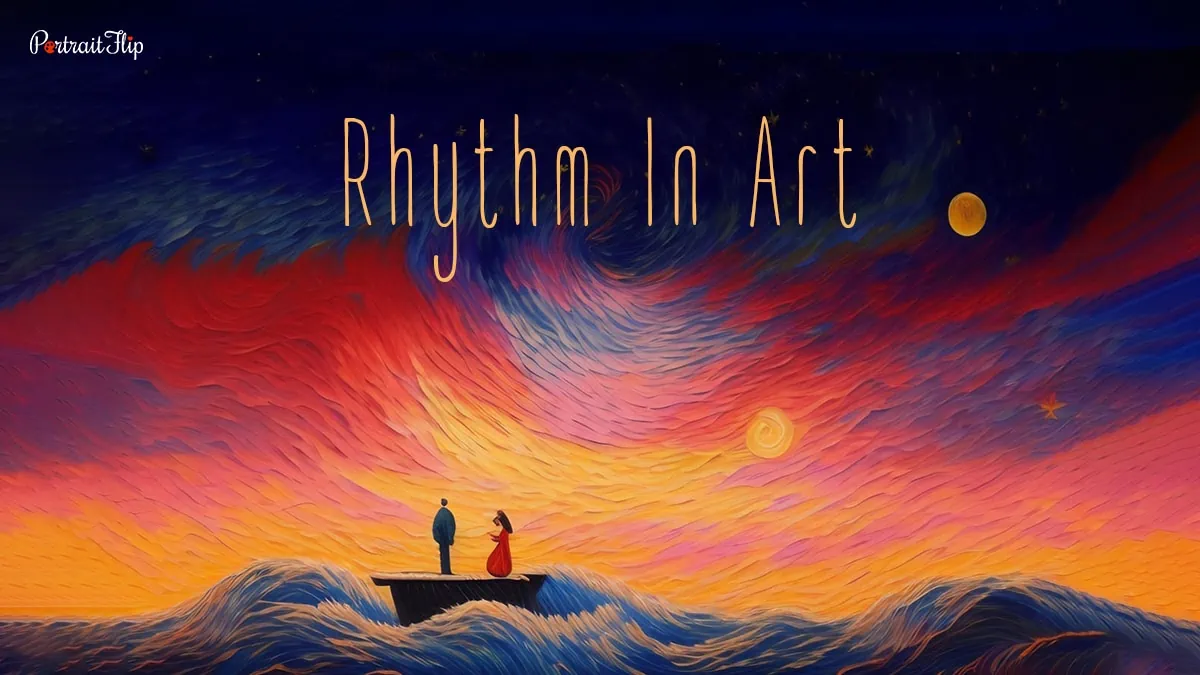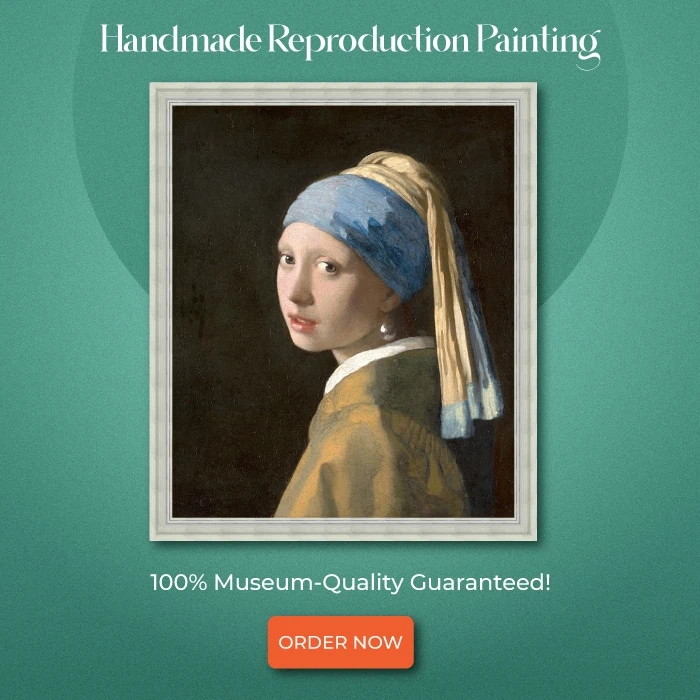While playing chess, do you notice the checkerboard?
Or, while walking down the street, do your eyes fall over the concrete patterns?
That’s the rhythm that makes you stare at the repetitive shape.
Repeating designs could be tedious and need rhythm in order to create a flow in the viewer’s eyes.
But when you hear rhythm, musical notes are pictured in your mind.
Just like music needs rhythm, art is not far from portraying it.
Rhythm in art is just like the flow of music; the only difference is that it has shapes, sizes, colors, and patterns to define.
It creates a movement in art.
To get an overall view of what rhythm in art is, I have explained the meaning and its type.
Table of contents
What is Rhythm in Art?
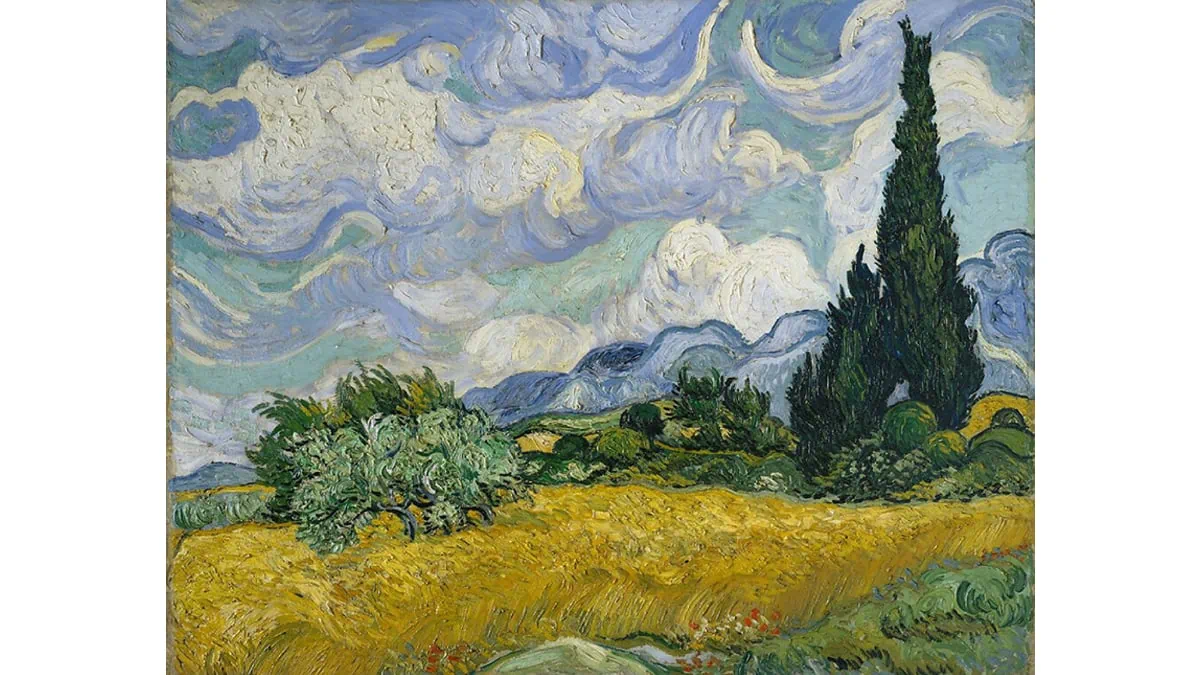
Balance, emphasis, movement, unity, variety, harmony, proportion, scale, and rhythm—these are the principles of art.
Rhythm definition in art belongs to these principles.
People around the world have derived their own definition of rhythm.
For some, it is a movement or fluctuation occurring with regularity, and some take it as a natural flow of elements.
The rhythm of art is repetition or patterns created with the help of colors, lines, shapes, space, and texture.
If you see an arrangement in art that creates a flow of movement, then you know what rhythm in art is.
It allows the viewer to stay a little longer and gives the artist freedom to express themselves in the painting.
All the famous paintings have some sort of rhythm that connects with the audience.
Let’s discuss the types of art rhythms that will clear some air and develop a new perspective.
Types of Rhythm in Art
There are five types of rhythm in art that define the paintings accordingly.
1. Regular Rhythm in Art
Think of drawing a horizontal or vertical line in a single pattern in an evenly distributed manner.
The visual that is seen is effortless.
When you hear the sound of a heartbeat or the ticking of a clock, it is consistent.
That’s how rhythm in regular art is defined.
A regular rhythm in art is just like its name: regular!
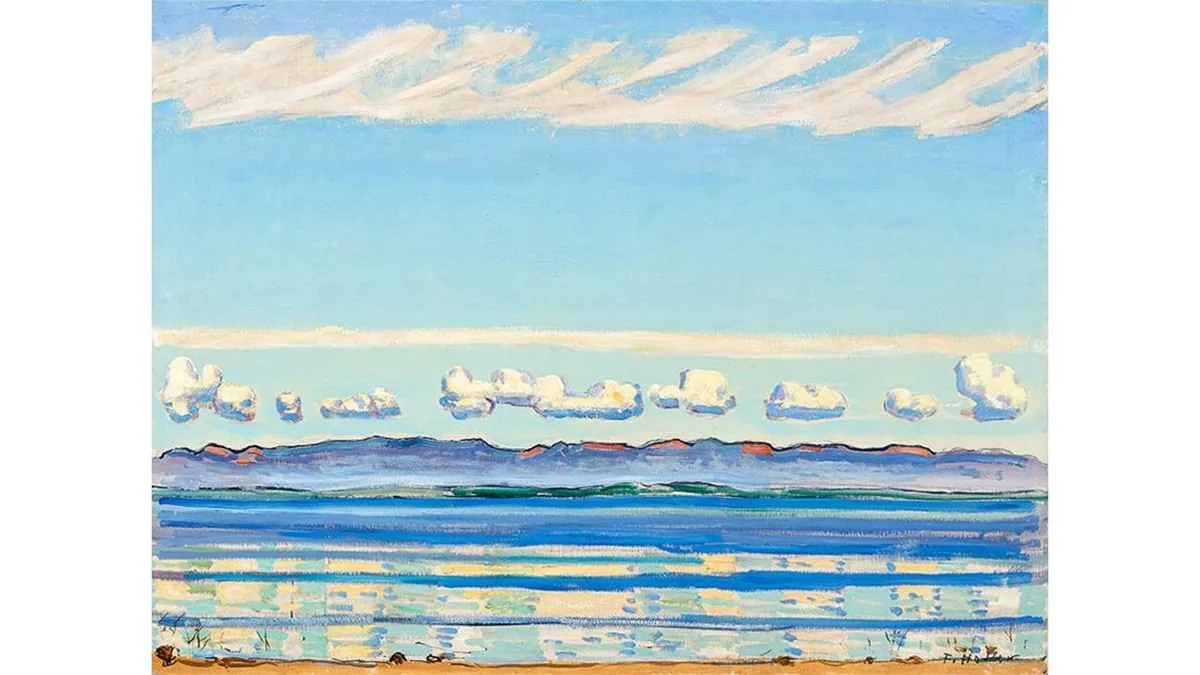
Shades, lines, and shapes that are portrayed in a consistent pattern are known as regular rhythm.
With this, regular rhythm is characterized as simple and uncomplicated.
If you look at the image above, the art is too repetitive and appears a bit tedious in the eyes of the viewer.
The painting is regular as an art form, which creates a basic rhythm.
Decoration with shades of blue seems a little monotonous.
Another example is Composition II in Red, Blue, and Yellow by Mondrian.
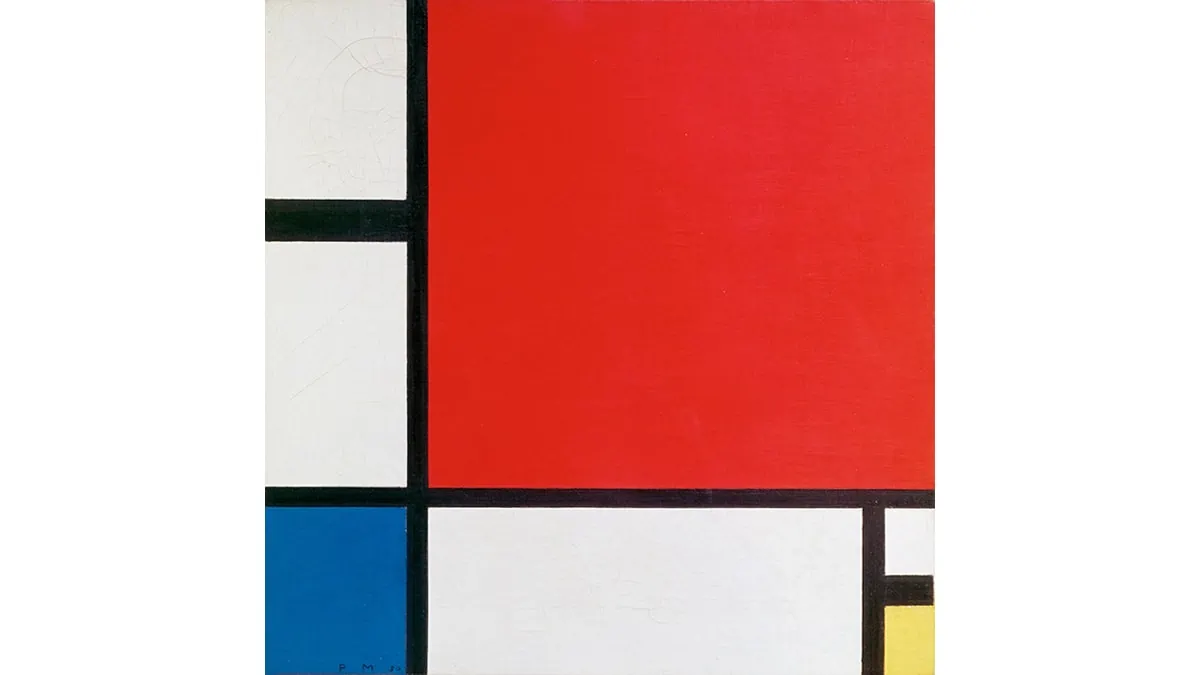
This art exemplifies the rhythm of art.
Look at the work closely; it has a consistent pattern of horizontal and vertical lines.
The black lines in repeated way form a regular shape illuminating a calm feel.
It could be a geometric art in which each line is organized in a particular format with accurate measurements.
This makes the work pleasing to viewers.
Some popular examples of regular rhythm are: The Four Trees (1891) by Claude Monet; Untitled (1967) and Untitled (1968) by Donald Judd; or Andy Warhol’s Twenty-Five Colored Marilyns (1962).
Also Read: About the life of Claude Monet
2. Alternating Rhythm in Art
Have you ever noticed an art form that has repetition but differs in some parts?
Didn’t get what exactly I meant.
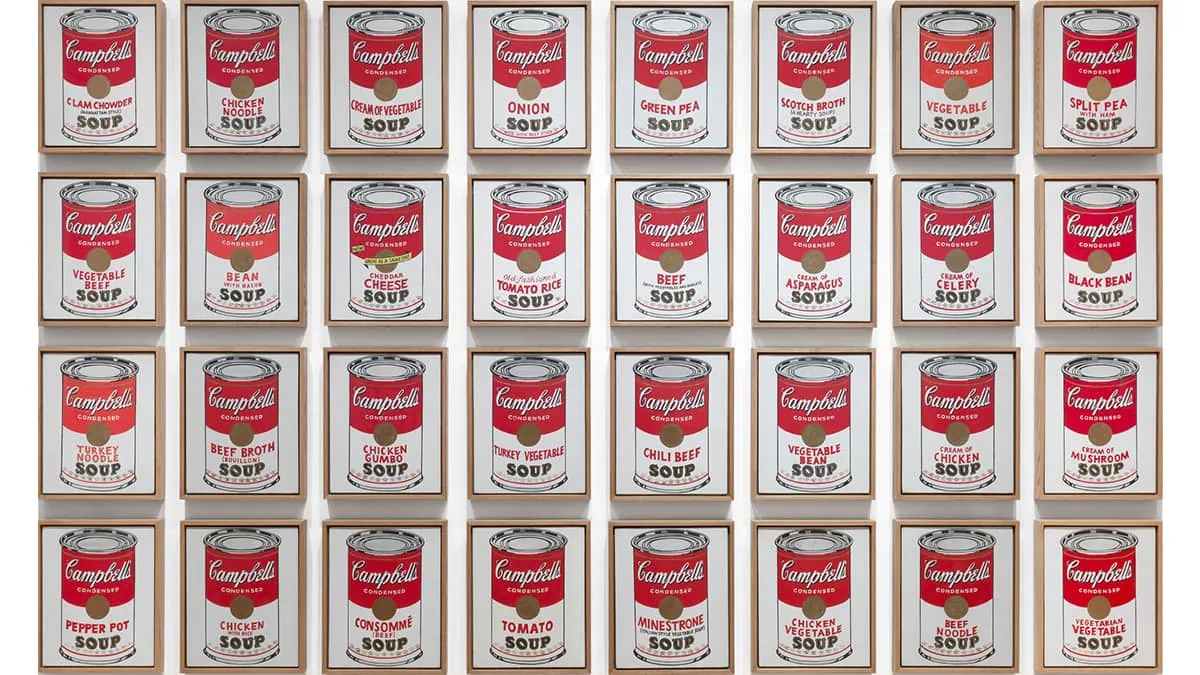
Look at this art carefully.
You’ll observe that although the ‘can’ in the picture is the same, it differs alternately.
This is the alternative rhythm that you are looking at.
The above art is “Campbell’s Soup Cans” by Andy Warhol, who was famous for his pop paintings.
The work has a grid of 32 canvases, each portraying a different flavor of Campbell’s soup.
Art that shows more than one or maybe two different motifs arranged in a pattern is known as alternating rhythm.
Some art sources believe that alternative rhythm is similar to regular rhythm but with more complexity.
The motifs may vary in color or design, but the results will add more meaning, value, and movement.
This rhythm requires extra attention from the admirer of the art. After all, it’s not the same!
Another example is M.C. Escher’s Lizard (1942).
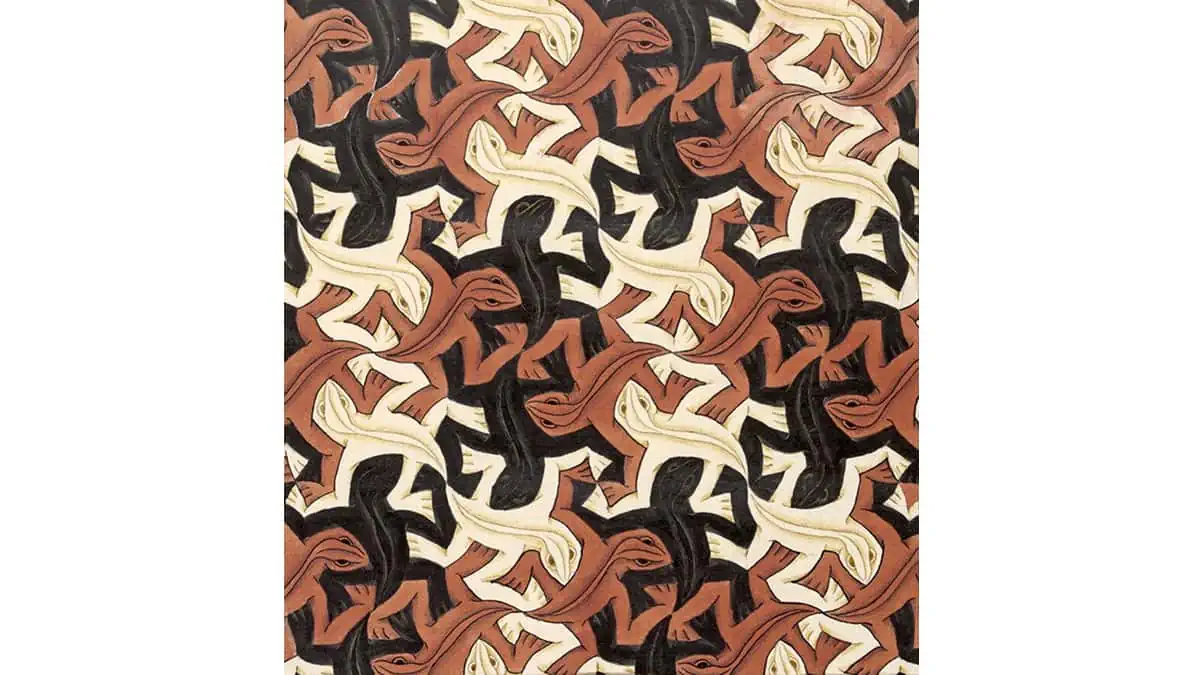
This rhythm in visual art shows lizard shapes in brown, black, and white.
Each lizard is independent but also co-dependent on each other, which makes them interesting to look at.
There is an alternative use of colors, but there are no evident gaps between the subjects that give it a cluttered appearance.
Some popular examples of alternating rhythm are: Endless Rhythm (1934) by Robert Delaunay, George Tooker’s Government Bureau (1956), or Red Room by Henri Matisse.
3. Flowing Rhythm in Art
There is one famous paining that will explain this rhythmic art definition. Can you guess?
It’s The Starry Night by Van Gogh!
For a better understanding, play the video below. Stare at the spiral for 20 seconds, and then place your eyes on the painting.
Now you know what “Flowing” rhythm is all about.
It is a type of rhythm that creates a sense of movement and fluidity in art.
Starry Night is one of the most popular examples of movement rhythm.
It has the most accurate brushwork that makes the art move, or, you can say, dance.
If you look at Van Gogh’s works, they all follow the same pattern, which makes him a brilliant rhythm artist.
Another popular example could be Edvard Munch’s The Scream.
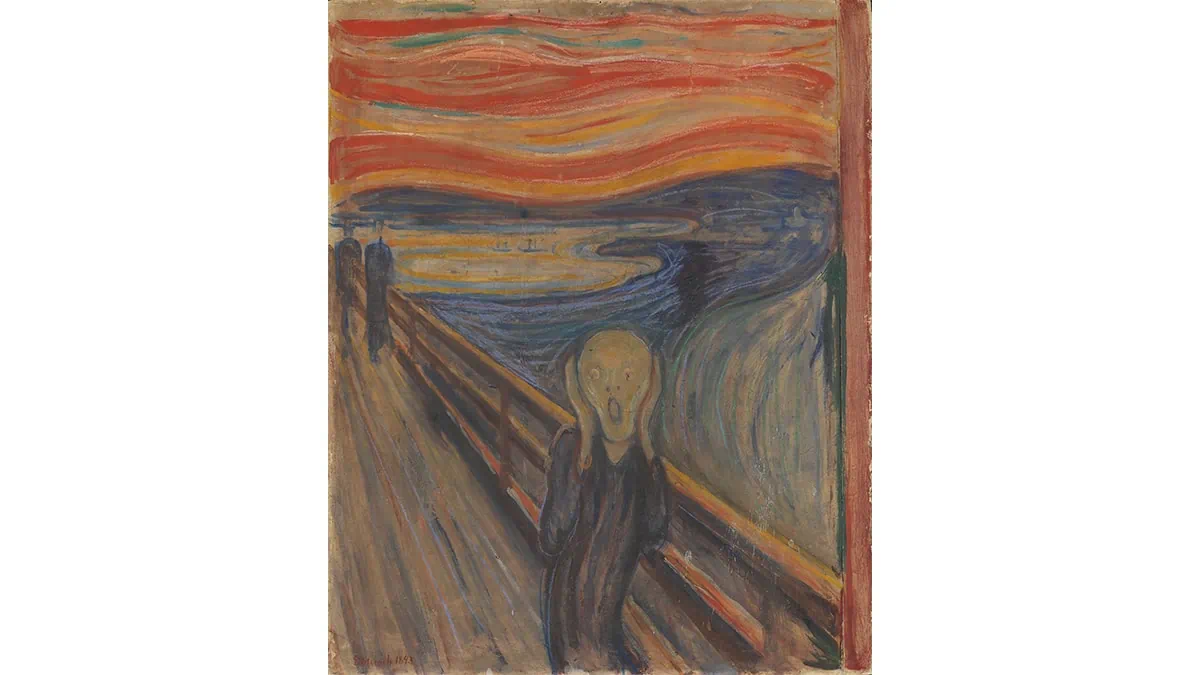
The brush strokes, the flow of colors, and the way the figure is standing in a swirling movement create a flow in the art.
The entire painting swings and forms a flowing rhythm.
Even the texture of the paint emphasizes its dynamism.
The organic curves and repeated patterns create a sense of continuity in the painting.
Some popular examples of flowing rhythm are: Bush Medicine Dreaming by Gloria Petyarre (2008), Hans Hokanson’s Helixikos Number 3 (1968), or The Great Wave by Hokusai (1829–32).
Suggested Read: Unity in Art
4. Progressive Rhythm in Art
Another element of art rhythm is progressive.
It is a rhythm arranged in a sequence that gradually increases or decreases in size, colors, or textures in art.
Didn’t get me? Look at the art below.
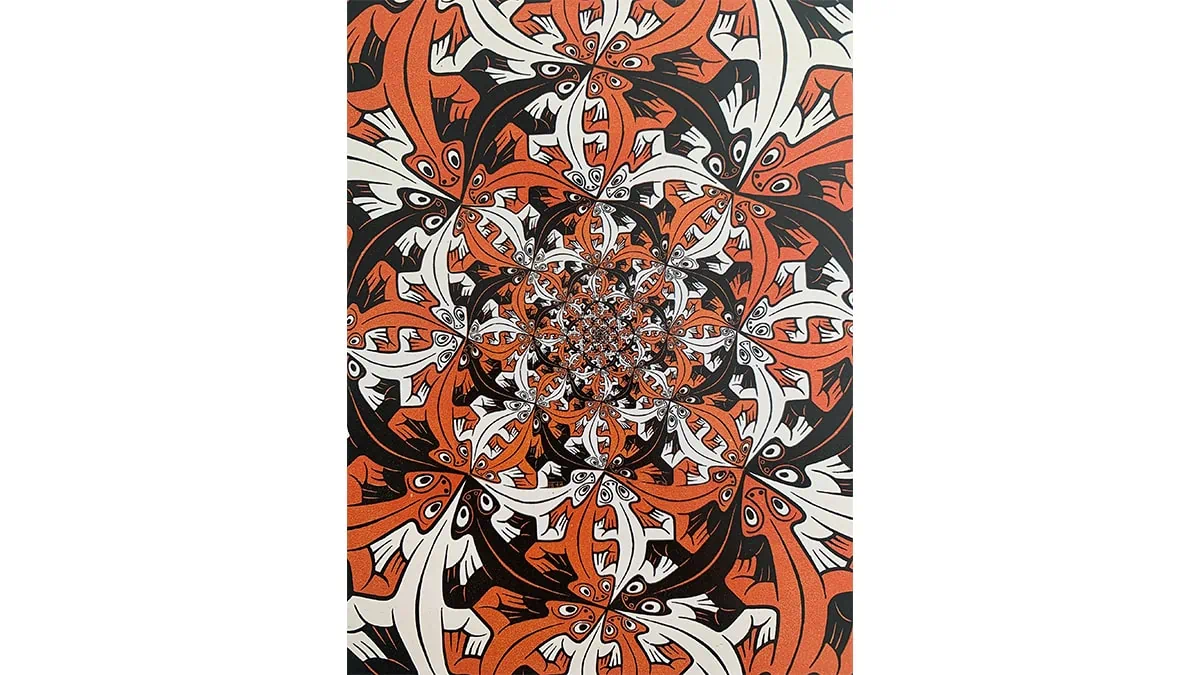
What did you see?
The shape is gradually increasing along with the art. This is what progressive rhythm is all about.
The above artwork is a famous piece by MC Escher known as Smaller and Smaller.
It is the most detailed art print, with the pattern getting smaller and smaller according to the perspective of the viewer.
Why is it known as progressive rhythm?
This is because the art is either increasing or decreasing, which indicates progress.
Another brilliant example of progressive rhythm is “Bird in Space” by Constantin Brancusi.
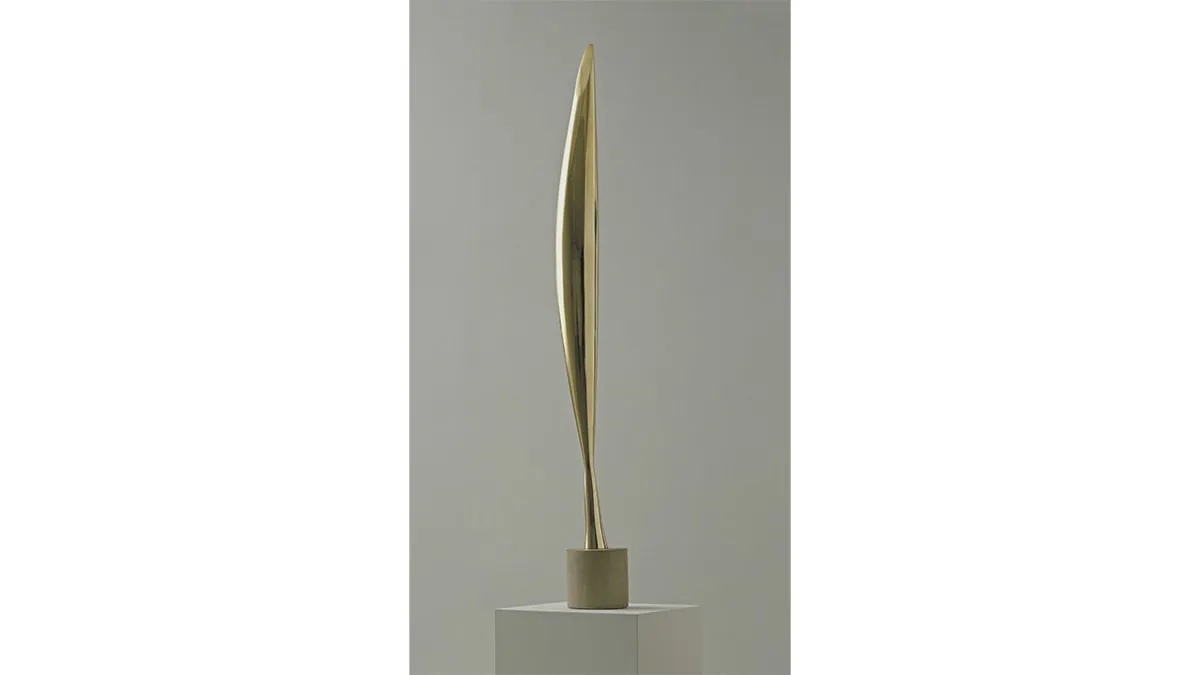
In this work, the form of the bird is becoming more sleek and trim as it grows.
The sculpture creates a dynamic sense of progression, as if the bird is soaring upward.
The progress that we could witness right in front of our eyes.
Even Kandinsky’s “Composition VIII” falls into the category of progressive rhythm.
This rhythm demonstrates how the art can change in size or shape, or even be the same and only be seen from a different angle in space.
Some popular examples of flowing rhythm are: Marcel Duchamp’s Nude Descending a Staircase (No. 2) (1912); Three Flags by Jasper Johns, 1958; or Fall Plowing by Grant Wood (1931).
5. Random Rhythm in Art
What do you understand by the term “random”?
Something that is unspecified, unusual, or unexpected, right?
The elements of artwork that are spontaneous and unpredictable are known as random rhythm.
These rhythmic arts create a sense of excitement and energy among the audience.
The urge to know what meaning lies behind the piece brings chaos to the artwork.
I mean, just look at No. 61 (Rust and Blue) by Mark Rothko.
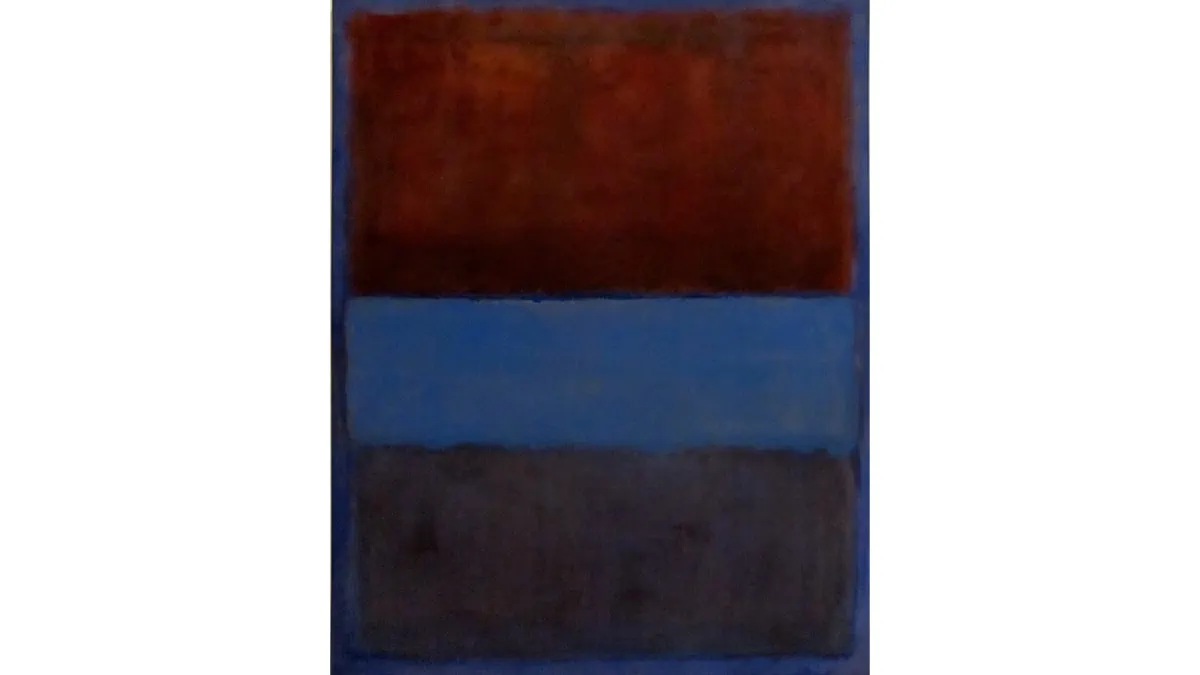
This abstract art is composed of rectangular shapes and three colors arranged randomly.
The lack of structure creates a sense of unpredictability.
This will lead Rothko’s admirers to develop some questions, mainly associated with his thoughts behind the creation of this type of art.
Well, if we are talking about random artwork, then how can we forget Jackson Pollock?
If you observe Jackson Pollock’s paintings, you will notice that the drippy colors are randomly placed.
The meaning is way beyond anyone’s imagination.
Interesting facts: Jackson Pollock was the highest-paid artist for his work.
Some popular examples of flowing rhythm are: Golconde by René Magritte (1953), Bridget Riley’s Recollection (1986), or Autumn Rhythm (Number 30) by Jackson Pollock (1950).
Don’t you wish to own artworks by Mark Rothko that have a random rhythm added to them?
We can make your wish come true; check out the link below and avail some cool offers on it.
To Conclude
You learned about the definition of rhythm in art, the principles of art rhythm, and it’s types.
Now you know that without a sense of rhythm, art will be lifeless.
Just like music requires beats, the arts also need rhythm to form a pattern.
It keeps the work interesting and catches viewers’ attention.
Everyone should have one of these rhythms at home.
With the aid of reproduction paintings, it is super easy and affordable to own such renowned artworks.
All you have to do is hit the button to send the instructions to our artists.
Hello Art Lovers
I hope you find the blog about “Rhythm in Art” informative.
There must be some questions to ask and suggestions to give, right?
Feel free to write in the comments below, where I can read your thoughts and valuable feedback.
If you love reading about art, then you will surely love our arts and aesthetics page, where you can find content and facts about art.
Keep reading and exploring!
FAQs
Vincent van Gogh’s Starry Night (1889) is the best example of rhythm in art.
The repetition of lines, shapes, colors, and more conclude how to express rhythm in art.
The techniques include variation, contrast, graduation, and repetition.
The sequence of patterns seen in continuous format is how you identify rhythm in art.



